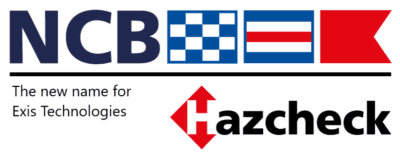This summary provides an overview on updates being introduced in the Amendment 42-24 edition of the IMDG Code which may be used on an optional basis from 1 January 2025.
It provides a brief overview of the changes being introduced and should not be considered a comprehensive listing of all amendments. For full details and applicable provisions, refer to the text of Amendment 42-24.
Summary of Key Changes:
Part 1: General Provisions – Definitions
- Updated definition for recycled plastics material (now mentions IBCs).
- A new definition for “degree of filling” has been added.
Part 2: Classification
- UN 3555 has been added to the list of liquid desensitized explosives.
- One amendment and three new additions to the organic peroxide table.
- Sodium ion batteries have been added to Class 9, along with new vehicle entries and a new life-saving appliances entry.
- Updates to paragraph 2.10.2.7 and the introduction of Special Provision SP375 clarify exemptions and permit UN 3077 and UN 3082 to be exempt from IMDG Code requirements if under 5 kg or 5 L, even if not declared marine pollutants.
Part 3: Dangerous Goods List
Various amendments have been made to existing entries, special provisions (SPs), stowage codes, properties, and observations, along with the addition of new entries. Notable changes include:
- Carbon (UN 1361):
- Removal of SP925, meaning carbon can no longer be exempted from the IMDG Code.
- Addition of SP978, which introduces new definitions, weathering, transport, and packaging requirements.
- Removal of PP12, meaning carbon is no longer permitted in specific bags (5H1, 5L1, and 5M1) in closed CTUs.
- Activated Carbon (UN 1362):
- SP979 clarifies exemptions from the IMDG Code provisions and adds a new documentation requirement under section 5.4.4.2.
- Additional changes to UN Number entries:
- UN 1006, 1013, 1046, and 1066: SP406 increases the limited quantity value to 1000 mL.
- UN 1835 and UN 3292: PSNs have been amended.
- UN 1835 and UN 3423: SP409 allows continued use of Amendment 41 for a transition period. This also applies to UN 3560.
- UN 3423: Reclassified from Class 8 to Class 6.1, subhazard 8 and now Packing Group I (PGI). It is no longer permitted in LQ, stricter EQ limits apply, and shipment in IBCs requires competent authority approval.
- UN 1391 and UN 3482: Now permitted in tanks.
- UN 3129 (PG II & III), UN 3130 (PG II & III), and UN 3148 (PG I, II & III): Stowage category changed to “D” (on deck only, prohibited on passenger ships). SW5 replaced by stowage code “SW31.”
- UN 3536: Stowage category changed to “D” (no longer permitted under deck or on passenger ships).
- Several entries have had updates to properties and observations.
- New UN numbers added for fire suppressant dispersing devices (Class 1.4S and Class 9), sodium ion batteries (Class 9), disilane (Class 2.1), gallium in manufactured articles (Class 8), trifluoromethyltetrazole-sodium salt in acetone (Class 3), and vehicles powered by lithium metal, lithium ion or sodium ion batteries (Class 9).
Part 3: Special Provision
- SP28 now applies to liquid desensitized explosives under Class 3.
- SP388 clarifies the application of UN 3171, including new battery-powered vehicle DGL entries. A new paragraph .8 clarifies that hybrid vehicles on container ships will have the same requirements as SP961.1 on ro-ro decks.
- SP922, 928, 931, 935, 939, 954, 964, and 979 now reference the new documentation requirements under paragraph 5.4.4.2.
- SP375 clarifies conditions for UN 3077 and UN 3082 when package size results in non-classification as marine pollutants.
- SP978 and SP979 replace SP925 for carbon entries, including details on packing group assignments, stowage requirements, and exemptions from the IMDG Code.
Part 4: Packing Instructions Updates
Numerous minor changes and formatting improvements have been made. Two new packing instructions have been introduced:
- P303 applies exclusively to UN 3555.
- P912 applies to new vehicle entries (UN 3556, 3557, and 3558).
A new tank special provision TP42 applies to UN 1391 and UN 3482.
Part 5: Consignment
- Lithium battery marking now extended to cover the new sodium ion battery entries.
- For carbon shipments, the transport document must include the date of production, date of packaging, and temperature of the material at the time of packaging.
- Stowage plans onboard ships must now include both primary and subsidiary hazards.
- A new paragraph 5.4.4.2 requires a certificate exempting a substance, material, or article from the IMDG Code provisions to be submitted alongside cargo information as required by SOLAS regulation VI/2.
Part 6: Construction and Testing of Packagings et al:
The chapters in Part 6 include several updates to referenced standards and minor revisions.
Part 7: Transport Operations
- Stowage code “SW31” has been added, requiring stowage away from potential sources of ignition for certain water-reactive liquids.
- Carbon is now included in the stowage and handling provisions for Class 4 in section 7.6.2.7.
This free summary was produced by NCB Hazcheck, a leader in compliance solutions for managing dangerous goods in sea transport and e-learning courses for the transport industry.
IMPORTANT NOTES:
The IMDG Code is produced by the International Maritime Organization.
This is a brief guide to the changes only. Please refer to the IMDG Code for a complete list of all changes in this Amendment.
A general transitional period runs from January 1, 2025, to December 31, 2025, during which the previous amendment A41-22 remains applicable.
NCB Hazcheck accepts no responsibility for errors or omissions.
Download the DETAILED SUMMARY OF CHANGES here.







